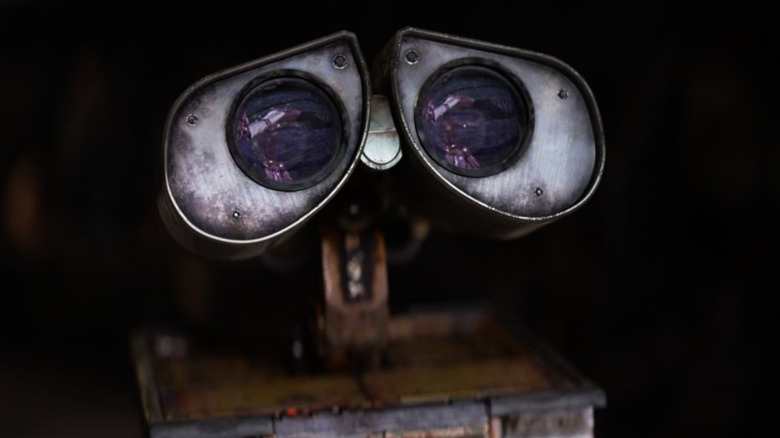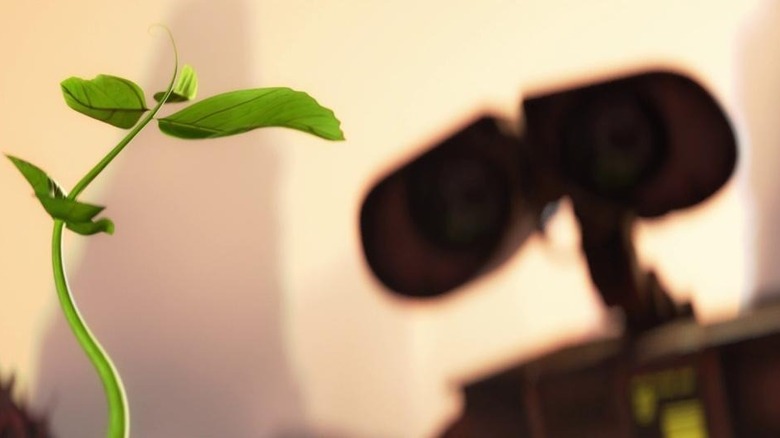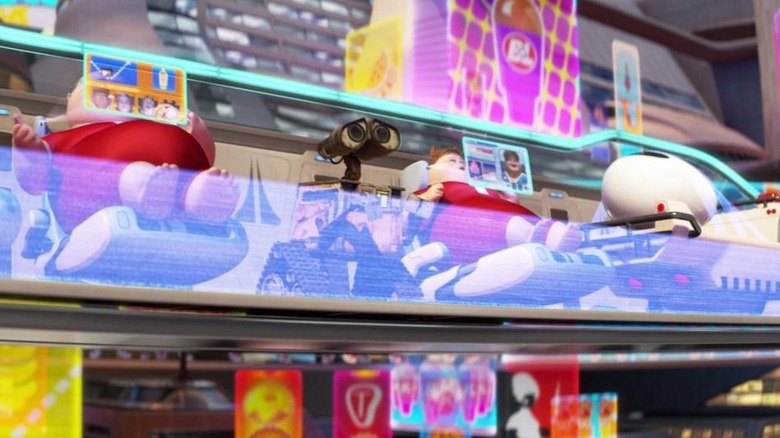WALL-E Director Andrew Stanton 'Wasn't Trying To Predict The Future' (But He Did Anyway) [Exclusive]
To the surprise of many cinephiles, Disney-Pixar's sci-fi masterpiece "WALL-E" is getting a Criterion Collection release this month. This is huge for many reasons. For one, it's the very first Disney produced film to join the pantheon of culturally significant classic and contemporary films. Second, it will be the seventh animated film to join the collection — a very rare occasion, as the Criterion canon comprises over 1,700 films.
The introduction of a Disney-produced film in the Criterion Collection has been controversial, but rest assured: for director "WALL-E" Andrew Stanton, who personally reached out to Criterion to make this release happen, this is a moment of personal satisfaction rather than a huge deal with the Disney company. Skepticism aside, of all possibilities a Disney/Criterion collaboration could offer, "WALL-E" is a welcome and fitting addition to the Criterion Collection. Stanton's animated classic has a strong reverence for the cinema that comes before it. It's a film that looks towards the silent era for visual storytelling technique as it charts its dialogue-light story. It's a futuristic tale where the love and optimism for the future of humanity is symbolized through the melodies of "Hello, Dolly!"
Most importantly, "WALL-E" remains significant because of its evergreen humanist and environmentalist themes. Taking place in the distant future where humans have abandoned a polluted Earth to live on a starship colony, the animated film feels as relevant today as it did when it was released in 2008. This week, /Film spoke to Andrew Stanton about the Criterion release of "WALL-E," and Stanton revealed that predicting the future was never his original intent with the film's direction.
'I don't like being right on many of those issues'
In a special supplemental feature included in the Criterion release of "WALL-E," entitled "Prophecies," Stanton and co-writer Jim Reardon look back on the film's social commentary and how much of the film has predicted the state of our current world. When we asked Stanton about how surprised he was upon retrospection, he gave us an interesting answer.
"I said it in the doc: I don't like being right on so many of those issues. I wasn't trying to predict the future. It's science fiction, not science fact. I was just trying to predict a believable future that you would buy so that we could accept that maybe humanity left and this character was alone. It was very selfishly just for character investment, but you want to go with things that don't distract you, like, 'I don't buy that,' because if the audience goes like that, they're not investing in the main character. You go with as much logic as you could possibly stretch it."
Though still a time of environmental anxieties, 2008 feels a world apart from the high-tech age we live in now. The first iPhone released just one year before "WALL-E" in June, 2007, and at the time it was a cutting piece of technology that was accessible to the few. Today, in our smartphone dominated world, it's getting quite hard to picture a life before our tiny pocket computers. Our dependent relationship with technology has reached an apex.
Animators are observant people
As SpaceX keeps trying to find an inhabitable environment in the stars as a distraction from our existence on Earth, and as our relationship with technology grows into an uncomfortable codependency, we're not exactly far from the reality "WALL-E" proposes — humans flowing through life on the starship Axiom with no real direction, consuming media with individualized screens. Of course, "WALL-E" is not the only dystopian fiction to predict these trends, but the specificity in which it paints this complacency is staggering.
"We're observant people. Animators are probably closer on the Venn diagram with comedians, because they're very observant of people and things going on around them and they're very sarcastic. It's probably not a coincidence that "Idiocracy" came out, what, six months before "WALL-E?" Clearly, there were signs in the world with the increase and the nascent beginnings of social media, the beginnings of apps, but the introduction of the iPhone. I think apps haven't even been mentioned yet. Just those seedlings were there. That's enough for very observant people to start extrapolating."
Though "WALL-E" certainly colors the future with a fair share of doom and gloom, what makes it such an important work is that it equally balances its cynical side with optimism. Sure, maybe this comes from the fact that it was designed to be a family film first, but Pixar has never been a stranger to complex, adult themes. It may be through the actions of two robotic lovers, but Stanton's film expresses great hope that one way or another, humanity will eventually be able to find balance.


